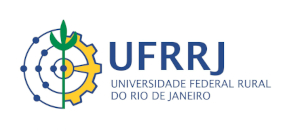Please use this identifier to cite or link to this item:
https://rima.ufrrj.br/jspui/handle/20.500.14407/21248| Tipo do documento: | Artigo em periódico |
| Title: | Agroindústria e projetos de assentamentos de reforma agrária: considerações acerca da trajetória recente |
| Other Titles: | (Agroindustries and agrarian reform settlement projects: considerations about their recent trajectory |
| Authors: | Mattei, Lauro Andrade, Daniel Cardoso de |
| Keywords: | Assentamentos rurais;Reforma agrária;Estruturas produtivas;Agroindústria;Rural settlements;Land reform;Productive structures;Agroindustry |
| Issue Date: | 2017 |
| Citation: | MATTEI, L.; ANDRADE, D. C. Agroindústrias e projetos de reforma agrária: considerações acerca da trajetória recente. Estudo Sociedade e Agricultura, v. 25, p. 83-106, 2017. |
| Abstract: | A principal atividade econômica dos assentamentos da reforma agrária brasileira tem sido a produção de alimentos para o autoconsumo e para abastecimento do mercado interno. Com o objetivo de manter a sustentabilidade econômica das famílias assentadas, essa atividade é desempenhada de diversas formas, envolvendo nos processos produtivos diferentes fatores de produção e incorporando distintas estratégias de organização produtiva. O debate sobre o desenvolvimento de formas produtivas para os assentamentos ganhou maior relevância a partir das décadas de 1980-90, quando o fortalecimento dos movimentos sociais rurais recolocou na agenda nacional a questão agrária. Naquele momento, a reforma agrária deixou de ser entendida apenas como instrumento de democratização das terras improdutivas, passando a ser discutida também a partir da viabilidade da produção e da comercialização das famílias assentadas, fatores imprescindíveis para mantê-las produtivamente nos assentamentos rurais. Essa ampliação no rol de demandas para a reforma agrária refletiu as dificuldades encontradas na própria dinâmica da disputa pela terra, fato que levou o Movimento Sem Terra (MST) a priorizar a tese de “Ocupar, Resistir e Produzir”, isto é, a incorporar no processo de luta temas relacionados à produção, aos mercados e aos financiamentos (MEDEIROS, 2009). |
| Abstract: | The debate about economic stability of rural settlements gained momentum in the 1990s and remains on today's agenda. This discussion persists because of the difficulties faced by settled families in surpassing the barrier of self-consumption and increase their production and income levels. The transformations underway in rural productive structures became key to understanding economic issues in the settlements, since producer associations in the settlements perceived that their engagement in agroindustrial production had become the main solution for successful settlement. Based on the history of the settlements, the evolution of production structures in the countryside and using quantitative study of the subject, this paper aims to outline the context of the national agrarian reform and discuss the economic dynamics of the settlements. In general, the study indicated that the productive barriers faced by settlements are strongly associated with the economic growth model based on agribusiness and land concentration. It was found that the production of the settlements and the technological level of its productive structures possess a number of disadvantages and limitations when compared with large-scale producers and agro-industrial complexes. |
| URI: | https://rima.ufrrj.br/jspui/handle/20.500.14407/21248 |
| ISSN: | 14130580 |
| Appears in Collections: | Publicações do OPPA |
Se for cadastrado no RIMA, poderá receber informações por email.
Se ainda não tem uma conta, cadastre-se aqui!
Files in This Item:
| File | Description | Size | Format | |
|---|---|---|---|---|
| Agroindustria e projetos de assentamentos de reforma agraria_consideracoes acerca da trajetoria recente.pdf | 311.12 kB | Adobe PDF |  View/Open |
Items in DSpace are protected by copyright, with all rights reserved, unless otherwise indicated.

